iSqFt, a veteran platform dating back to 1993, has long been a trusted name in construction bidding. But things are moving fast in the construction industry. Today's general contractors now demand more from their bidding platforms. They want comprehensive coverage of project scopes, seamless communication with subcontractors, and up-to-date sub-networks.
So does iSqFt still have what it takes to meet GC's growing needs? How does it stack up against newer, innovative platforms like Downtobid?
In this guide, we’ll look at iSqFt's strengths and shortcomings, and compare it with Downtobid as a construction bid invitation platform.
Note: If you want to speed up bid invitations to subs, try Downtobid. The software takes identifies all the trades needed to complete the project, connects you with relevant subs and sends out personalized bid invites within minutes. Click here to sign up for a free demo.
Key Takeaways
- iSqFt (1993) merged with ConstructConnect 2016, relies on self-updated profiles causing outdated contacts, misclassified trades.
- Downtobid uses AI personalized invites, verified database with updates, automated follow-ups for better engagement.
- iSqFt: large North American network, basic ITB management, centralized planroom but lacks customization, automated tracking.
- Downtobid wins: bid engagement, response tracking, planroom organization, workflow efficiency with AI-sheeted scopes.
- Pricing: iSqFt $3,600+ annually custom; Downtobid transparent $150-500/month, better cost-effectiveness.
What is Downtobid?

Downtobid helps Commercial General Contractors simplify bidding by automating ITBs and improving subcontractor engagement. Instead of blasting out generic bid invites, it tailors them to the right subcontractors using AI-driven matching.
The platform also keeps subcontractor data clean and follows up automatically, so GCs spend less time chasing responses and more time managing real bids.

What is iSqFt?
iSqFt has been a go-to name in construction bidding since its launch in 1993. Designed as a tool to help GCs connect with subcontractors and manage bid invites, the platform also provides tools for networking, lead generation, and access to a large database of commercial construction projects.
In 2016, iSqFt merged with BidClerk and Construction Data under the ConstructConnect brand. Since then, the legacy iSqFt platform has been phased out in favor of the newer ConstructConnect platform.
It helps users:
- identify project leads and product sales opportunities
- network with other construction professionals
- manage the bid solicitation process
- access a commercial construction projects database, featuring thousands of active projects
There are many iSqFt alternatives on the market you can check out that do similar functions.
While the iSqFt name is still widely recognized, many users feel that the transition has left some features feeling outdated or less user-friendly.
Downtobid Features
Here are some of the features Downtobid offers.
AI-Powered, Personalized Bid Invites
One of the biggest frustrations subcontractors face is receiving generic ITBs that lack the details they need. Platforms like iSqFt often send out bulk invites with little to no customization, leaving subcontractors guessing about whether the project is relevant to them.
Downtobid solves this problem by using AI-powered templates to craft personalized bid invites. Every invite includes key details and is tailored to match the subcontractor’s trade, location, and past project history. This personal touch doesn’t just improve response rates—it creates stronger, more meaningful connections between GCs and subcontractors.
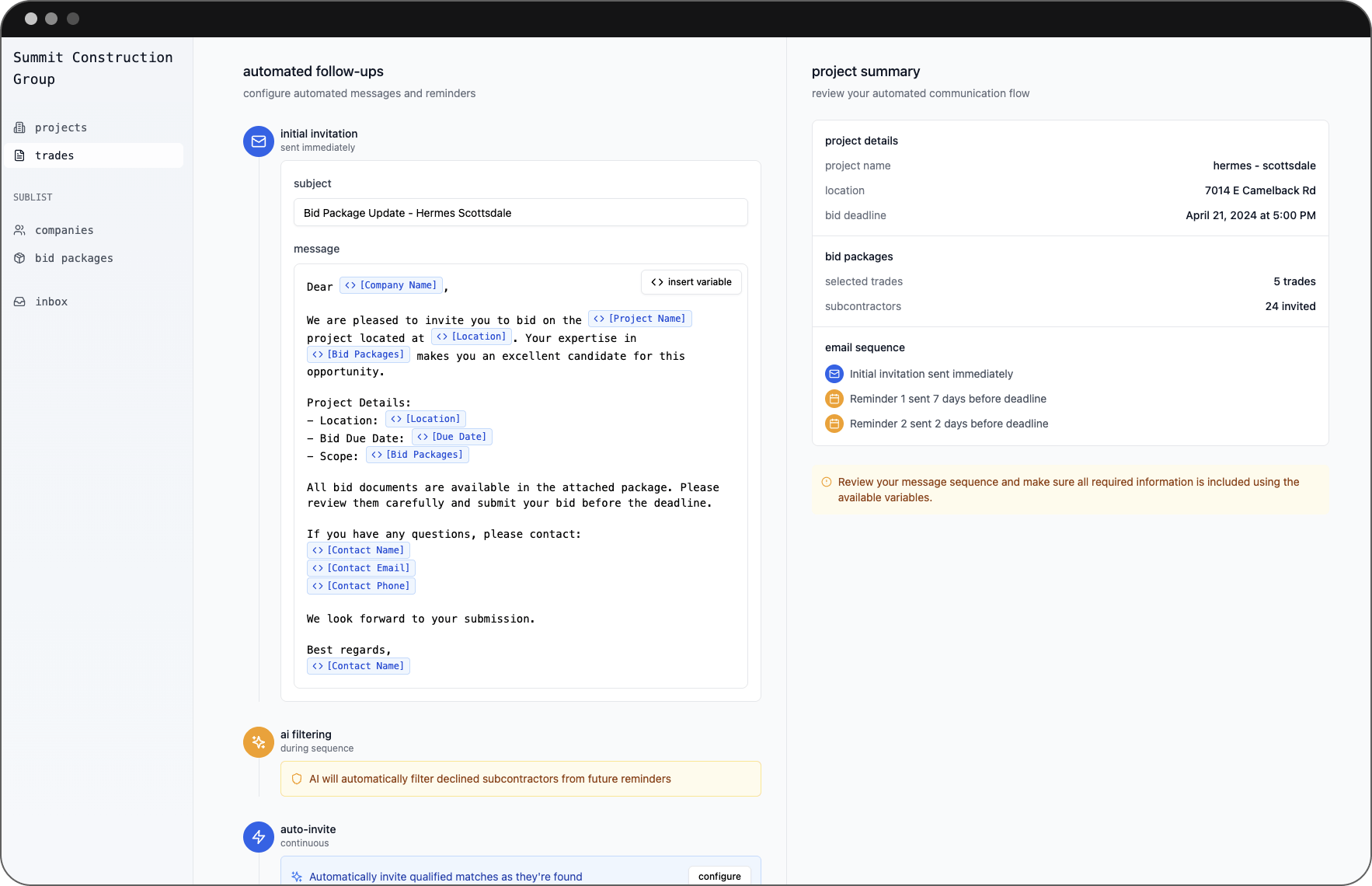
Verified, Up-to-date Subcontractor Database
Having access to a big subcontractor network is great—until you run into outdated contacts, duplicate entries, or inactive contractors who no longer respond. Platforms like iSqFt rely on subcontractors to keep their profiles up to date, which often doesn’t happen because they’re busy with projects.
Downtobid takes the hassle out of this by using a self-updating subcontractor database. It regularly verifies and refreshes contact information, so GCs know they’re reaching out to contractors who are active, qualified, and ready to bid. This helps keep the process smooth and ensures the right subcontractors get the right invites.
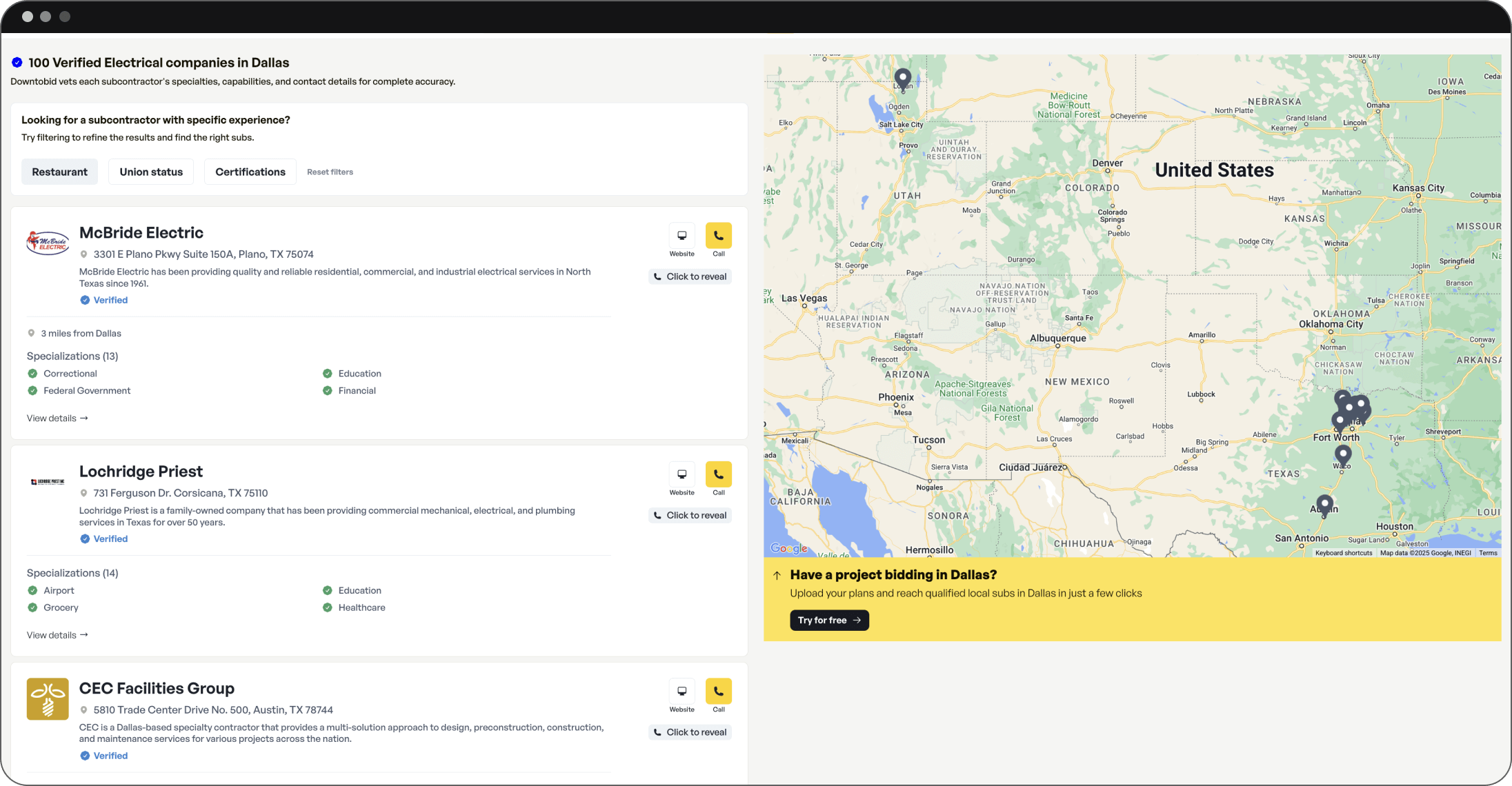
AI-Sheeted Planroom for Simplicity
Planrooms can be a pain to navigate, especially when documents are unorganized. On many platforms, subcontractors end up flipping through dozens of sheets, trying to figure out which ones are relevant to their work.
Downtobid fixes this with its AI-sheeted planroom. The platform automatically organizes plans and labels them clearly, so subcontractors can find what they need right away. Instead of wasting time hunting through files, they can focus on responding to bids that matter.

Automated Follow-Ups
Managing follow-ups manually is one of the most time-consuming parts of the bidding process. Without automation, GCs have to track who’s responded, send reminders to those who haven’t, and make sure nothing slips through the cracks.
Downtobid’s AI-driven follow-up system makes this easy. The platform keeps track of subcontractor actions—whether they’ve opened an invite, expressed interest, or declined—and sends automatic reminders based on their status. Follow-ups stay organized, so GCs can quickly see which bids are still in progress and focus on moving projects forward.
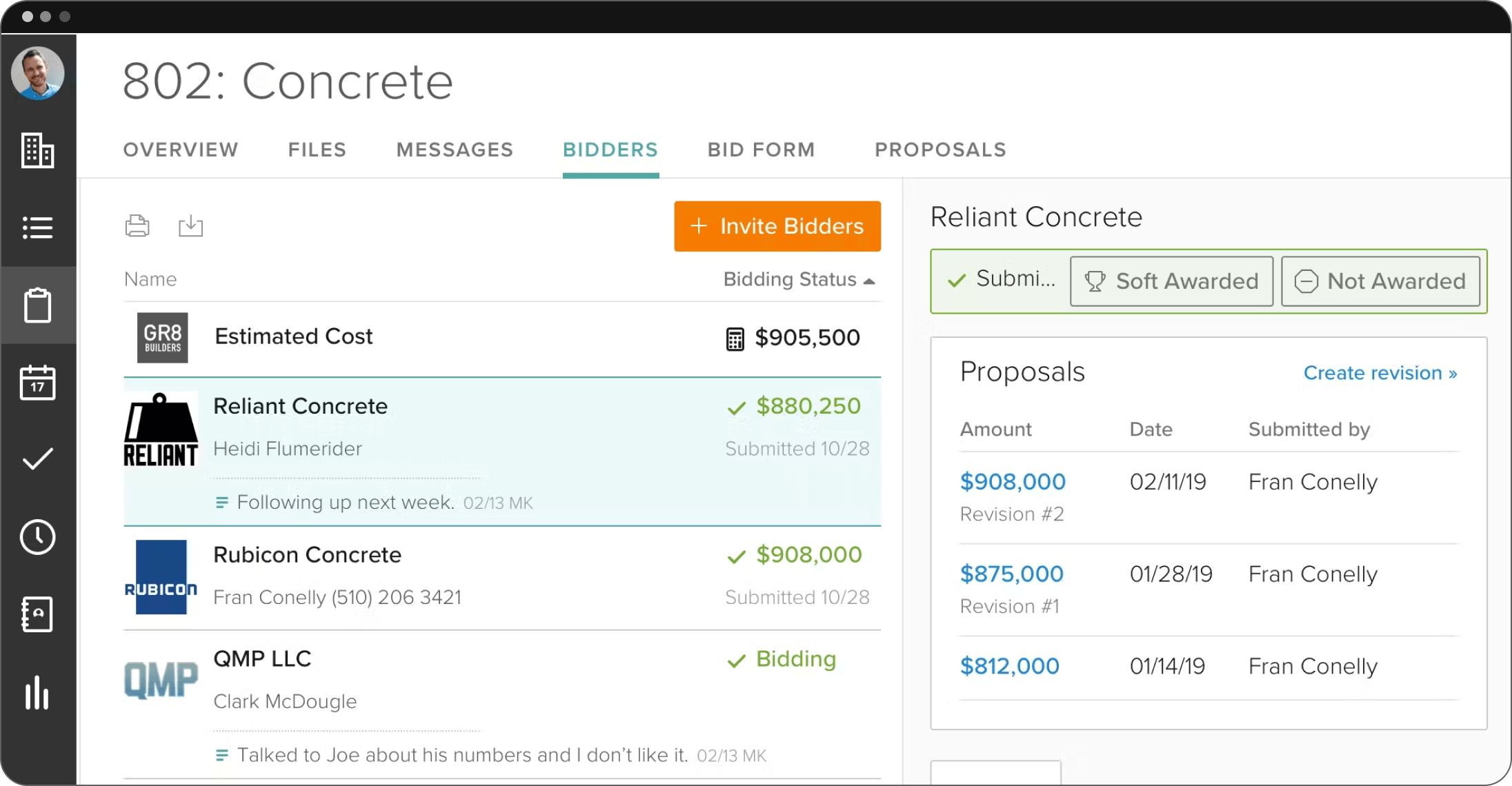
You can read more about similar tools on our comparison page of BidClerk vs ConstructConnect vs Downtobid.
iSqFt Features
Here are some of the key features iSqFt has to offer:
Large Subcontractor Network
iSqFt’s biggest strength is its extensive subcontractor database, which allows GCs to search for and connect with trade contractors across North America. This scale can be useful for GCs bidding in multiple states or needing access to a variety of specialized trades.
However, since iSqFt relies on subcontractors to maintain their own profiles, the accuracy of this data varies. Users often encounter outdated contacts, duplicate entries, or misclassified trades, making it harder to find reliable bidders.
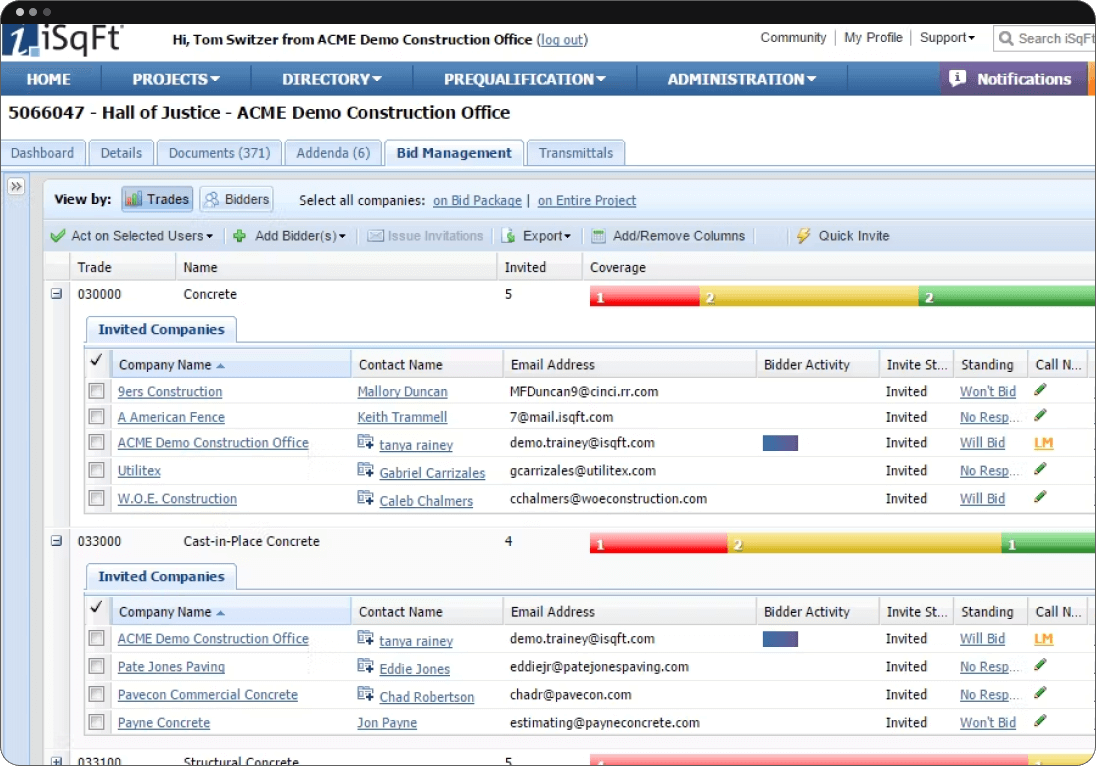
Bid Solicitation & ITB Management
iSqFt provides a basic ITB system that allows GCs to send out bid invitations in bulk. While functional, it lacks customization—most invites are generic, providing minimal project details beyond the basics.
This means subcontractors often have to dig through project files to determine if a bid is relevant to them, leading to lower engagement. Some GCs have noted that subcontractors ignore invites or fail to respond because the process isn’t as tailored as other platforms.
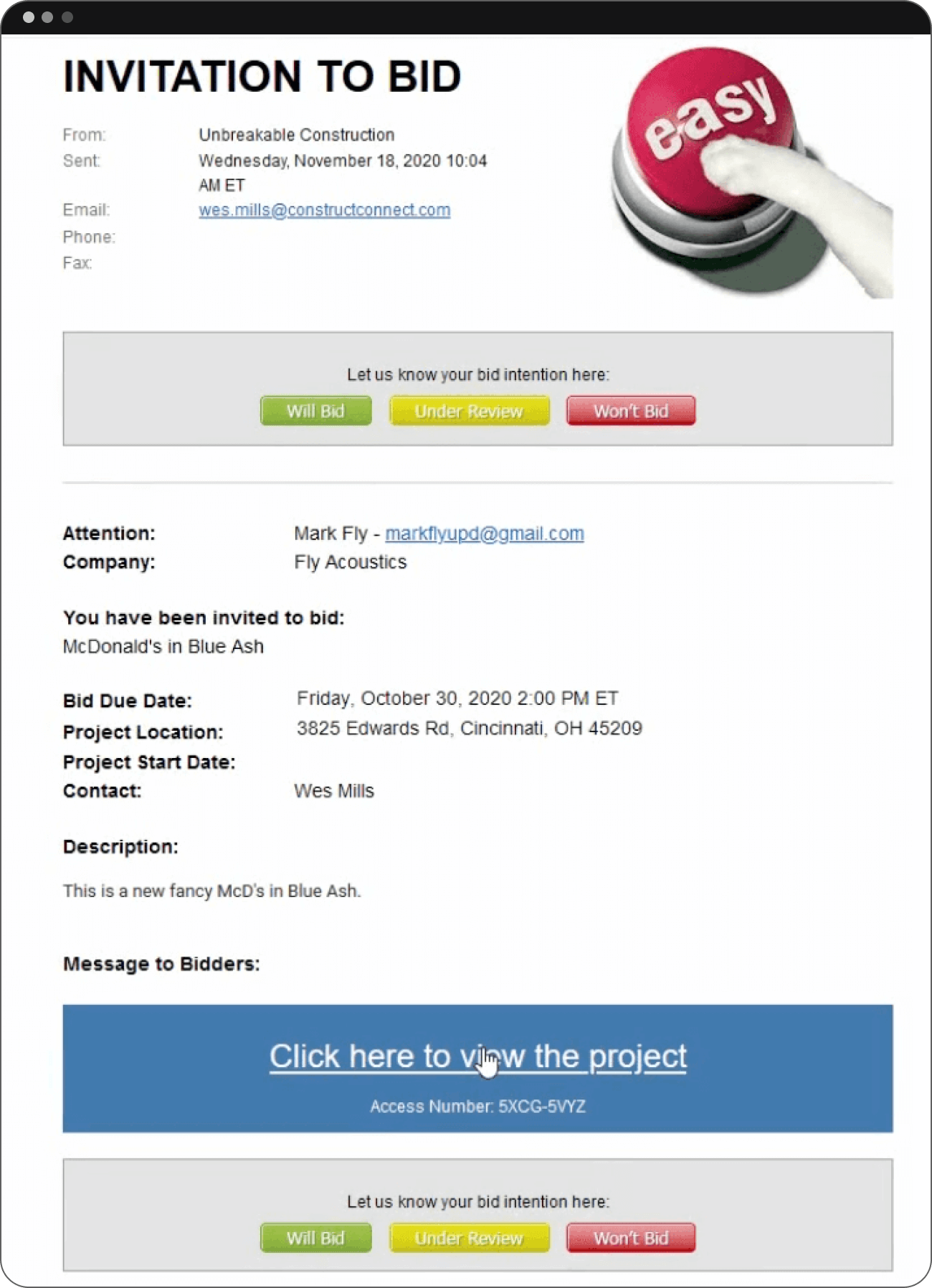
Planroom & Document Management
iSqFt offers a centralized planroom where project documents can be stored, shared, and accessed by subcontractors. While this provides a single location for bid-related materials, the way files are structured can make navigation difficult.
Some subcontractors have pointed out that they need to download entire plan sets just to locate the specific sheets relevant to their scope of work. This can slow down the bidding process and lead to missed bids due to disorganized file structures.
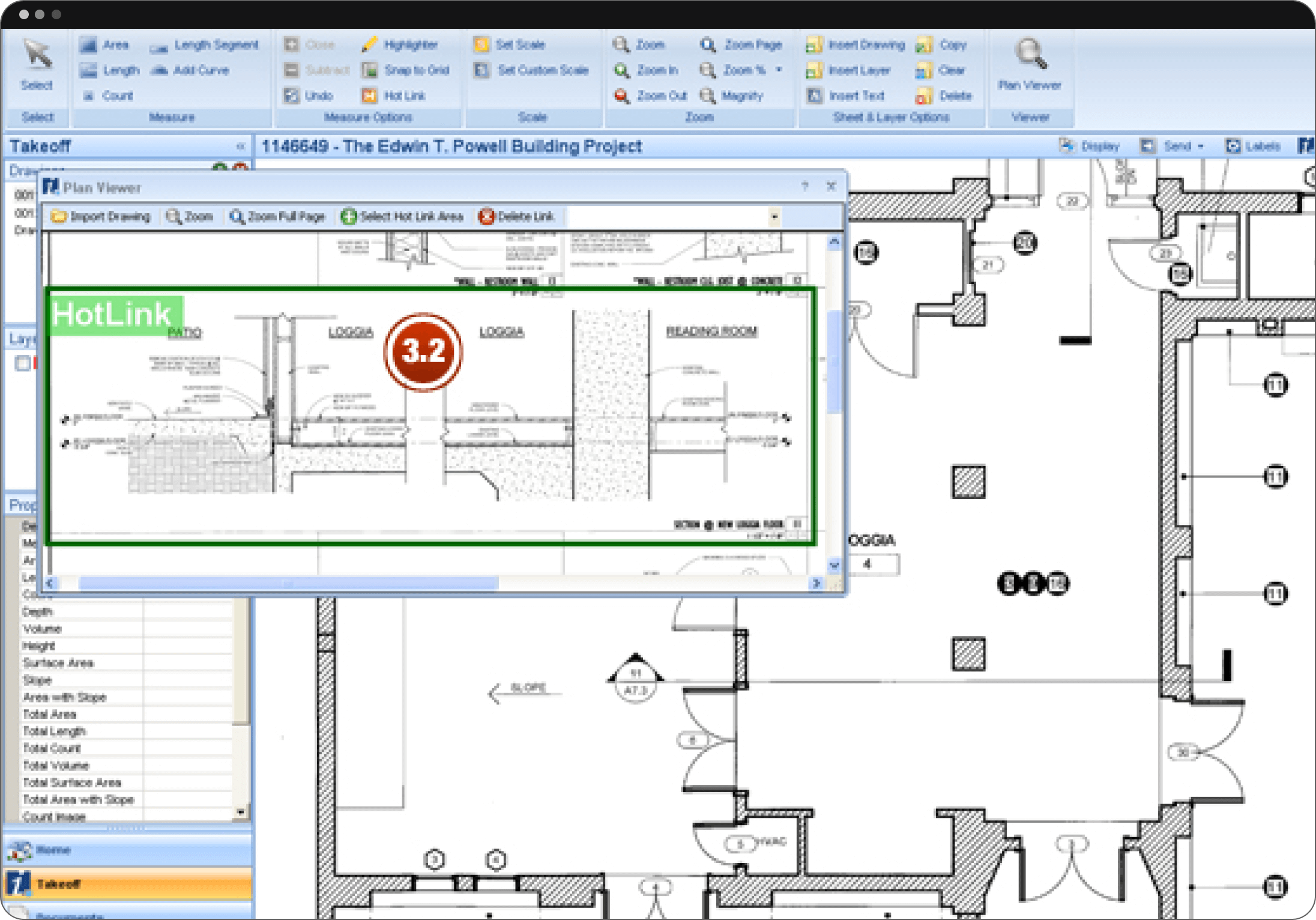
No Automated Follow-Ups
Managing bid responses on iSqFt is a manual process. Unlike platforms that automate follow-ups, GCs using iSqFt must track responses themselves and manually send reminders to subcontractors who haven’t replied.
Since many subcontractors receive dozens of ITBs per day, GCs often struggle with low response rates and missed bid opportunities. Without an automated follow-up system, this process requires more effort from preconstruction teams.
Lead Generation & Preconstruction Database
Beyond bid management, iSqFt offers access to a commercial construction projects database, which includes thousands of active projects. This feature is aimed at subcontractors, manufacturers, and vendors looking to identify bid opportunities and expand their network.
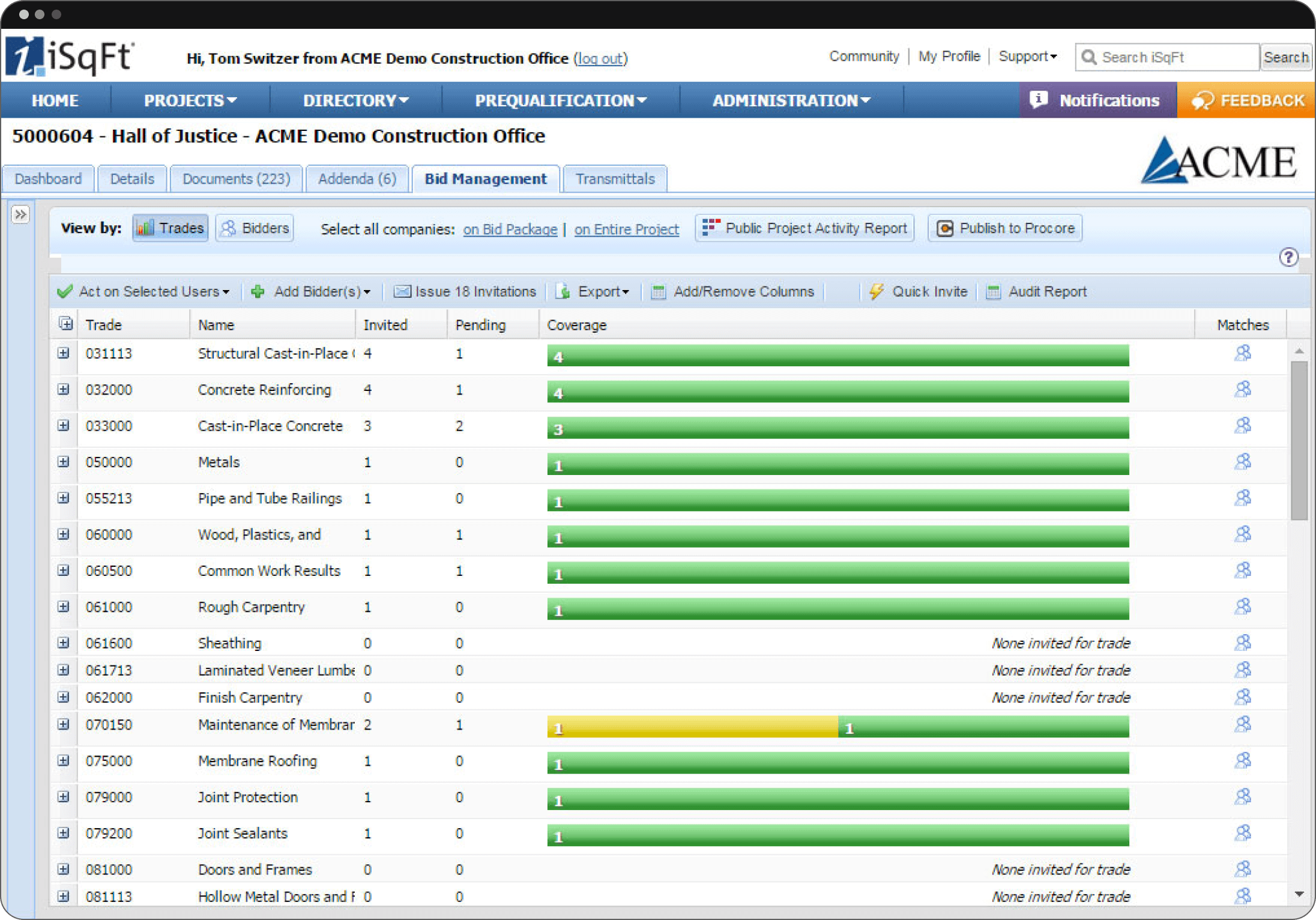
However, some users feel that iSqFt’s lead generation tools have become less effective in recent years. Since the ConstructConnect merger, resources have shifted toward the newer platform, and some have noticed fewer updates and declining data accuracy.
iSqFt vs. Downtobid: Features Compared
Both iSqFt and Downtobid help GCs manage bid solicitation, but they take very different approaches to subcontractor coverage, bid engagement, and follow-ups. Let’s break down how they compare:
1. Subcontractor Network & Coverage
Winner: iSqFt (for reach), Downtobid (for accuracy)
iSqFt, now part of ConstructConnect, has built a large subcontractor database, giving GCs access to a broad pool of bidders across different trades and regions. However, since subcontractors self-manage their profiles, outdated contacts, misclassified trades, and duplicate listings are a common problem.
Downtobid focuses on quality over quantity, using AI to verify and maintain subcontractor data so GCs connect with active, relevant bidders instead of wasting time on leads that are no longer in business. While iSqFt casts a wider net, Downtobid ensures better bid coverage by reaching the right subcontractors from the start.
2. Bid Invite Engagement & Response Rates
Winner: Downtobid
iSqFt’s bid invitations are generic and mass-sent, often leading to low engagement from subcontractors. Since GCs can’t customize ITBs in a meaningful way, subs have to manually sift through project details—something many don’t have time for. As a result, ignored invites and low response rates are common complaints.
Downtobid is the best bid invitation software because it improves bid engagement by sending personalized bid invites that highlight why the subcontractor is a good fit. This means subs are more likely to pay attention, respond, and participate, increasing overall bid coverage.
3. Follow-Ups & Bid Coverage Tracking
Winner: Downtobid
iSqFt doesn’t offer automated follow-ups, leaving GCs responsible for chasing down responses manually. This creates extra administrative work and makes it harder to track bid coverage in real-time.
Downtobid automates follow-ups using AI-driven tracking. Subcontractors receive reminders based on their actions, and GCs can see responses ("Bidding," "Not Bidding," or "Interested") at a glance. By automating this process, Downtobid eliminates guesswork and ensures GCs know exactly where their bid coverage stands before bid day.
4. Planroom Navigation & Subcontractor Experience
Winner: Downtobid
iSqFt provides a basic planroom where GCs can upload and share project files. However, inconsistent organization means subcontractors often have to download large plan sets just to locate relevant sheets, which slows down response times.
Downtobid organizes planrooms automatically with AI-sheeted scopes, ensuring subcontractors can quickly find the documents relevant to their trade. This streamlined approach reduces confusion and improves bid participation.
5. Overall Bid Coverage & Workflow Efficiency
Winner: Downtobid
While iSqFt’s large subcontractor network gives GCs access to a wide pool of bidders, the lack of data accuracy, bid tracking, and response automation means bid coverage can be inconsistent.
Many GCs find themselves scrambling at the last minute to fill coverage gaps. Downtobid ensures better bid coverage from the start by targeting relevant subcontractors, tracking responses automatically, and streamlining follow-ups. Instead of hoping for responses, GCs get clear, predictable bid coverage with less manual work.
6. Pricing & Value
Winner: Downtobid
iSqFt pricing is custom and expensive, typically starting at $3,600 per year, with higher-tier plans costing significantly more. Many users feel the cost isn’t justified, especially given the extra effort required to verify contacts and manage bid tracking manually.
Downtobid offers clear, transparent pricing, starting at $150/month for up to 3 users, making it an affordable option for GCs who want better bid management without the high cost. Even at $500/month for larger teams, it remains far more cost-effective than iSqFt.
iSqFt vs. Downtobid: What Reddit Users Are Saying
To understand how GCs and subcontractors feel about iSqFt, we checked this Reddit thread, where users shared their experiences with ConstructConnect (which owns iSqFt).
iSqFt: Pros and Cons from Reddit Users
Many users pointed out that iSqFt is primarily focused on public bid opportunities, which can be useful for subcontractors looking for government work but may not be as relevant for GCs handling private projects.
One user explained:
- “When I tried it, it was almost exclusively public bids, which are available to the public already.”
For GCs using iSqFt for bid solicitation, reviews were mixed. Some liked the ability to distribute ITBs broadly, but others found data accuracy and communication issues to be a major problem.
One GC shared their frustration with mismanaged bid invitations:
- “ConstructConnect isn’t all great. They bought iSqFt, which had bought the Bid News planroom service. We send them invitations and documents to re-share to their subscribers, and they get something wrong every single time—be it the bid date, addenda, etc. It always leads to confusion if bidders get information from that side of the service.”
Another user had a negative experience with customer service and sales, saying the platform didn’t deliver on expectations:
- “In my personal experience, my money that I spent with them was a net loss. Horrible sales rep and subpar customer service.”
Some subcontractors did find value in iSqFt for receiving bid opportunities but emphasized that it’s mostly useful for public projects:
- “We use it every day to get bid notices. Yes, we’re also signed up for all of the local agencies that post jobs, but the vast majority we learn about through ConstructConnect. This is public bid work only for us (prevailing wage gov’t jobs). I have no idea if privately funded projects really get listed there.”
Choosing the Right Platform
When it comes to construction bid management, both iSqFt and Downtobid serve different needs. iSqFt, now part of ConstructConnect, has been around for decades and provides access to a large database of public bid opportunities. For subcontractors looking for government work or GCs that handle a lot of public projects, it can be a useful resource. However, data accuracy issues, outdated subcontractor contacts, and a lack of automation make it a more hands-on platform that requires extra effort to manage.
On the other hand, Downtobid takes a more modern approach by automating bid invites, follow-ups, and subcontractor management. It’s designed for GCs who want to save time and improve response rates by sending targeted, AI-driven invitations rather than blasting ITBs to massive, unreliable lists. Instead of focusing on volume, Downtobid prioritizes relevant connections, streamlined workflows, and accurate data to make bid solicitation more efficient.
Which One is Right for You?
- If your projects primarily involve public bids, and you need access to a broad subcontractor network, iSqFt may be a fit—but be prepared to manually verify subcontractor data and handle bid follow-ups yourself.
- If you're looking for a faster, more efficient way to manage ITBs, Downtobid offers automated workflows, cleaner subcontractor data, and AI-driven bid invitations that help GCs get better coverage without extra manual work.
Both platforms have their strengths, but the best choice depends on what kind of bidding process works best for your team.
Obviously, we’re biased, so check us out if you’re intrigued!